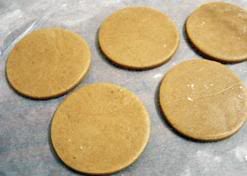It's cold in the Northern Hemisphere these days and as it approaches Christmas we all want some more homely and warm food. So today I'm going to bring to you a warm version of something that I have made before.
I'm going to post a recipe for janchi guksu 잔치국수 which is a simple warm noodle dish made with thin wheat flour noodles that are usually in a clear anchovy or beef broth. It is typically topped with thin strips of beef, eggs, and vegetables. I have previously posted a cold version of this dish that you could eat in summer, this is more suited for colder times. You can find my other recipe here.
Noodles symbolize long and happy lives in Korean culture. Thus, this noodle dish is traditionally served alongside other special occasion foods at large feasts such as weddings. The name of the dish comes from that tradition. And you know what, there is no better time to hope for longevity that at Christmas.
Today's recipe is going to have an anchovie broth but you are welcome to use a beef broth if you wish.
Ingredients
250g somyeon noodles
Anchovy Broth
10 - 12 medium to large dried anchovies (myulchi)
1 square dried kelp
100g Korean radish, cut into cubes
1/2 onion
2 garlic cloves
1/2 of scallion
6 cups water
1 tablespoon soy sauce
Toppings
1/2 zucchini julienned
1 small carrot julienned
1 egg, beaten and fried into a thin sheet
100g beef, cut into thin strips (if you make a beef broth use the same cut of beef)
2 sheets of dried seaweed
1/2 scallion chopped
Method
1. Wrap all the anchovies and kelp is a cheesecloth and secure it into a pouch.
2. Add all broth ingredients to a medium pot. Bring it to a boil. Reduce the heat to medium and boil for 10 minutes, uncovered.
3. Remove anchovies and kelp from the broth.
4. Add soy sauce, salt and pepper to taste and boil for an additional 15 minutes over medium heat.
5. Remove all vegetables from the broth. Keep it warm over very low heat while preparing the toppings and noodles.
6. Season the beef strips with 1 teaspoon soy sauce, 1/2 teaspoon sesame oil, 1/2 teaspoon sugar, 1/2 teaspoon minced garlic, and pinch black pepper. (If you use a beef broth season the cooked meat) Set aside while preparing the vegetables.
7. Lightly sprinkle salt over zucchini and set aside for 5 - 10 minutes. Squeeze out excess liquid from salted zucchini and sauté in a lightly oiled pan over medium high heat (1 - 2 minutes).
8. Sauté the carrots in a lightly oiled pan over medium high heat (1- 2 minutes), sprinkling salt and pepper to taste.
9. Sauté the beef in a pan for 2 - 3 minutes over high heat. (skip if using a beef broth)
10. Cut the seaweed into thin strips.
11. Bring a medium pot of water to a boil. Cook somyeon noodles according to the package instructions. 12. Drain quickly and shock in cold water to stop cooking. Continue to drain and rinse in cold water.
13. Make two one-serving size mounds as you remove from the water. Place the mounds in a colander to drain. Place the noodles in a serving bowl.
14. Pour the hot broth over the noodles.
15. Nicely arrange a small amount of each topping on top of the noodles.
16. Finish the dish off with a sprinkle of the chopped scallions.
Serve the dish whilst still warm and you will have everyone feeling warm and toasty and right at home with the meal that is a reminder of the good times at home.
There seems to be a lot of work that goes into the dish but the end result makes up for all of it with the taste being absolutely amazing.
I hope that you enjoy this recipe because is perfect as a home cooked meal to prepare you for the amazing Christmas dinner that you are bound to have. I hope that you all stay safe, healthy and happy until my next post.
AND MERRY CHRISTMAS!!!!!





















